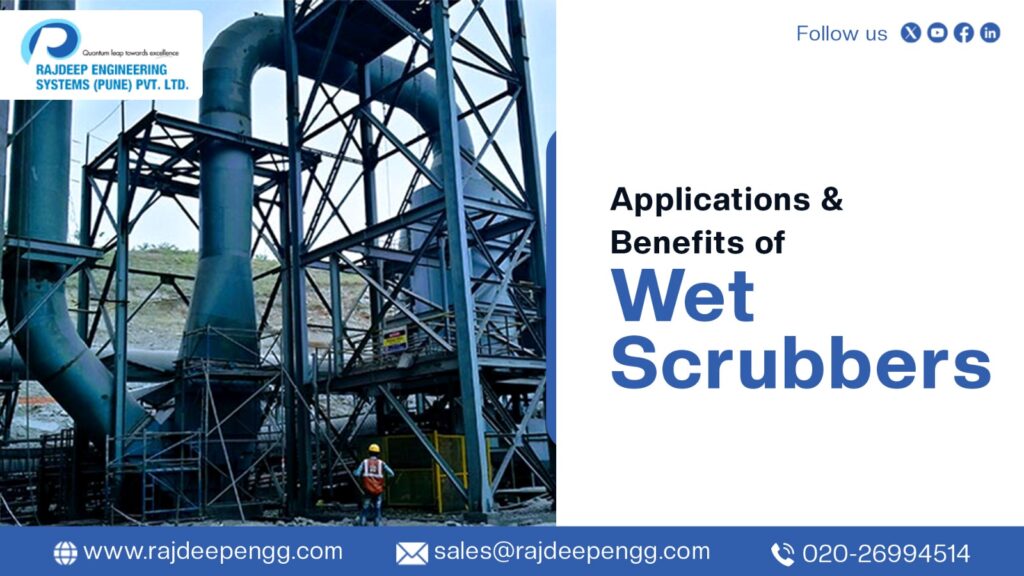Understanding Wet Scrubbers
A wet scrubber is an air cleaning system that utilises a liquid—typically water, though sometimes with chemical additives—to remove pollutants from the air. Common chemicals used in that include sodium hydroxide and caustic agents for neutralising acid gases, as well as slaked lime, calcium hydroxide, and potassium chloride. This method is highly effective in purifying the air within various facilities.
How Wet Scrubbers Work
It come in two primary types: high-energy and low-energy models.
- High-Energy Wet Scrubbers: These devices force liquid droplets into a converging section where a high-velocity gas stream, accelerated by a fixed-throat venturi, strikes the fluid stream. This collision breaks the liquid into fine droplets that capture pollutants. The droplets are then collected in a diverging section, where the gas velocity is reduced.
- Low-Energy Wet Scrubbers: These typically involve a simpler design where contaminated gases are passed through a liquid, absorbing harmful substances. The clean gas exits the scrubber, while the liquid, now containing absorbed pollutants, is processed further.
The liquid flow rate, or liquid-to-gas ratio, is crucial for a scrubber’s efficiency: higher liquid flow rates and more droplets per cubic inch lead to better pollutant capture. High-quality scrubbers are especially effective in environments with high pollution levels, removing many abrasive particles.
Benefits of Wet Scrubbers
Wet scrubbers offer numerous advantages, including:
- Handling Hot and Sticky Materials: They are well-suited for processing challenging materials and maintaining efficient operation under various conditions.
- Cost-Effectiveness: Wet scrubbers are relatively inexpensive to purchase and maintain compared to other types of industrial scrubbers. They also help reduce capital and maintenance costs significantly.
- Compact Design: High-performance models can be installed on smaller surfaces, making them versatile for different applications.
- Pollution Reduction: It are highly effective at reducing air pollution. They are commonly used in gas plants, oil refineries, and power plants to purify the air and protect equipment from dust accumulation. They also play a crucial role in preventing fires and explosions by removing particulate matter.
Conclusion
The efficiency of a wet scrubber depends on the particle size distribution and the specific type of scrubber. Lower-cost models are often more suitable for high-temperature environments, while high-efficiency models provide enhanced performance with water as the liquid scrubber. Beyond their cost-effectiveness, wet scrubbers contribute significantly to protecting human health and improving air quality.
For over 25 years, Rajdeep Engineering Pvt. Ltd. has been a leading provider of material handling system machines, bringing extensive expertise and innovative solutions to a wide range of industrial applications. Their experience ensures high-quality systems that enhance operational efficiency and environmental compliance.

